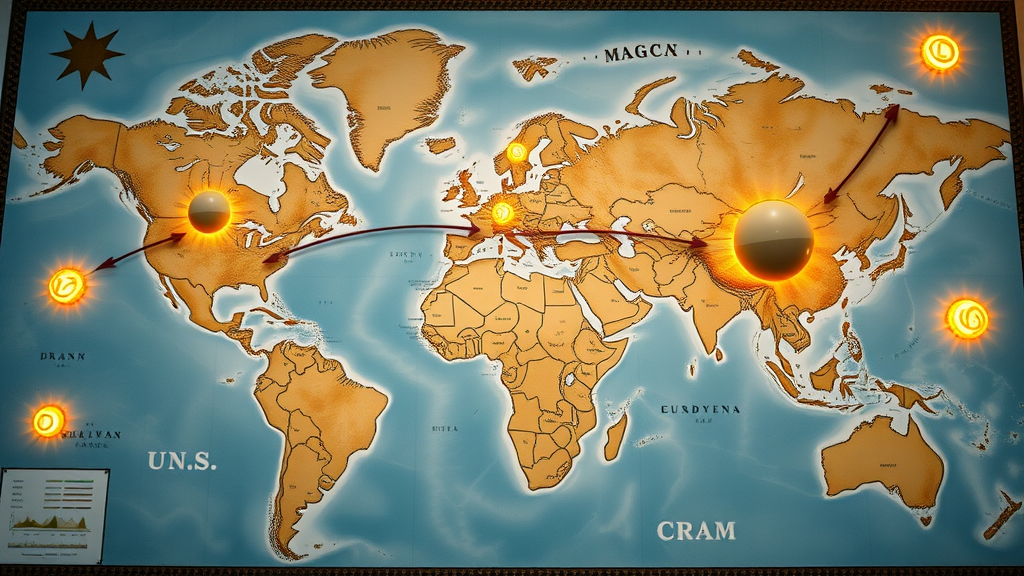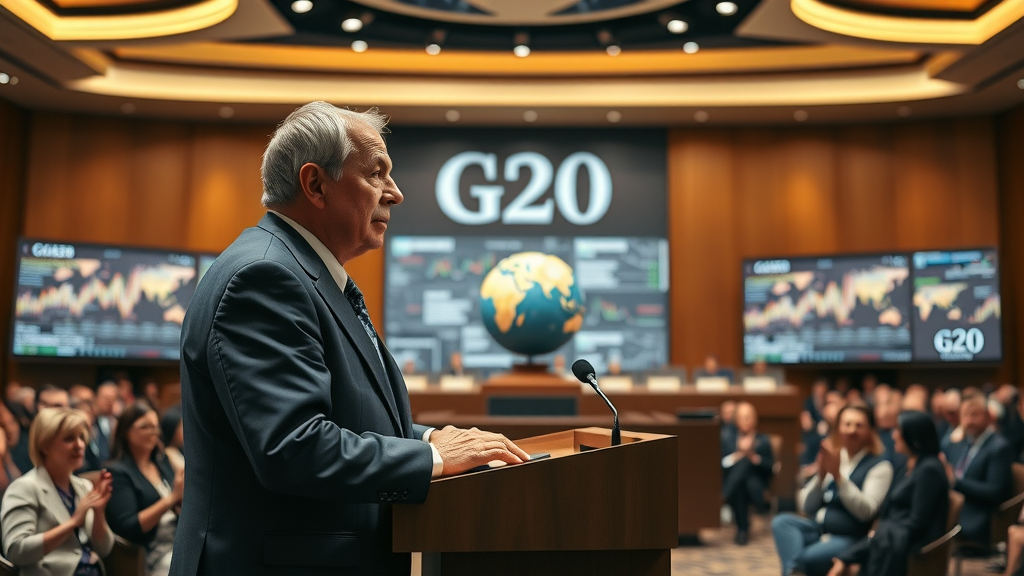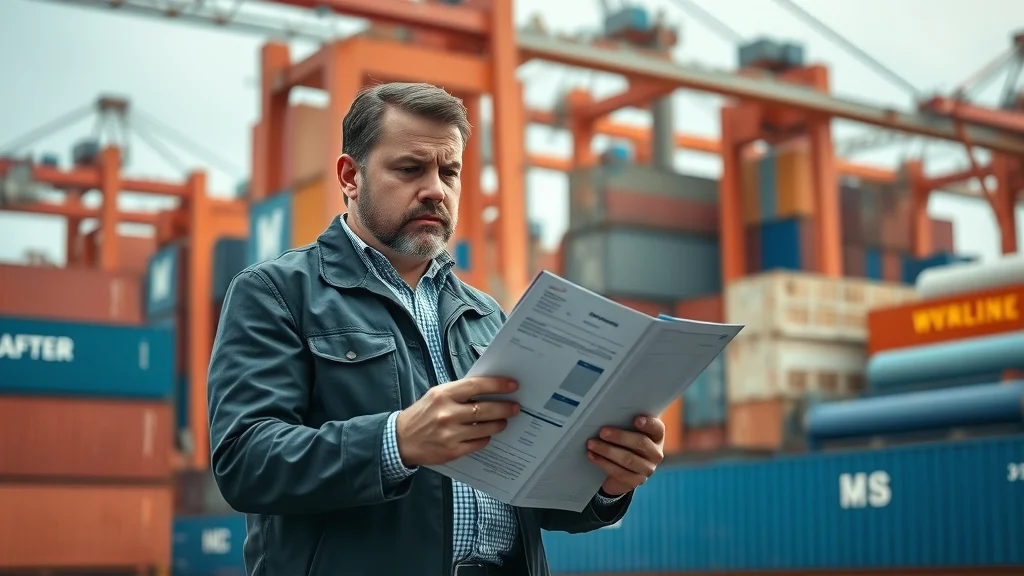Did you know that in 2022 the global inflation rate soared to a three-decade high, shaking economies worldwide? Understanding macroeconomic inflation factors is crucial—not just for economists, but for anyone who wants to grasp why everyday prices rise, why your paycheck may not stretch as far, and how the cost of living transforms overnight. This eye-opening guide will reveal what truly powers the global rise in prices, and what it means for you.

Understanding Macroeconomic Inflation Factors: A Surprising Look into Global Price Surges
- Did you know the global inflation rate reached a 30-year high in 2022? Discover the essential macroeconomic inflation factors that shape the cost of living, affect the consumer price index, and redefine purchasing power in both emerging and developed economies. This article offers a data-driven guide to the main drivers of price change worldwide.

Key Takeaways: What You'll Learn About Macroeconomic Inflation Factors
- The primary macroeconomic inflation factors and their real-world impact
- How inflation rate is measured using basket of goods and the price index
- The roles of oil price, monetary policy, and central bank interventions
- Insights into the cost of living and interest rate interconnections
- Actionable examples highlighting macroeconomic indicators
- Answers to top questions on determinants of inflation
- Expert perspectives and practical strategies to monitor price changes
Demystifying the Inflation Rate: The First Step in Analyzing Macroeconomic Inflation Factors
The inflation rate is the heartbeat of economic analysis, representing how much prices rise for goods and services over time. To decode macroeconomic inflation factors , start by understanding how these rate changes ripple through the economy. When the inflation rate climbs, every dollar in your wallet loses value, resulting in diminished purchasing power and a shifting cost of living. This can affect basic expenses such as food prices, housing, transportation, and healthcare—all core elements in the basket of goods .
Price changes don’t happen in a vacuum. Some are gradual, while others are triggered by significant economic events, such as a spike in oil prices or a shift in monetary policy from a central bank. Monitoring inflation is vital not just for financial experts, but also for businesses, policymakers, and families. It determines wage negotiations, investment opportunities, and fiscal response from policy institutions like the Federal Reserve or the European Central Bank.
How the Inflation Rate Reflects Macroeconomic Inflation Factors
The inflation rate aggregates the effects of numerous macroeconomic drivers. Fluctuations in the price of oil, energy, and food can push inflation higher, particularly in economies dependent on imports. Interest rates , set by central banks, play a significant role: lower rates often encourage spending, raising demand and prices, while higher rates can help cool an overheating economy. But the influences stretch further to include supply chain disruptions, labor costs, and even natural disasters.
For the United States, the inflation rate typically references changes in the Consumer Price Index (CPI). Global factors also spark changes, such as geopolitical tensions affecting oil price or global pandemics disrupting the availability of essential goods. As prices rise, so too does consumer concern, and central banks step in to stabilize expectations. This ongoing interplay is central to understanding not just temporary nudges in price, but the underlying health—and risks—of a national and global economy.

Basket of Goods, Price Index, and Consumer Price Index: Measuring the Impact of Macroeconomic Inflation Factors
To track macroeconomic inflation factors , economists use standardized measurement tools. The basket of goods is a collection of commonly purchased items—think groceries, rent, fuel, and clothing—used to monitor how prices change over time. The Consumer Price Index (CPI) calculates the price movement of this basket, giving a clear picture of inflation’s impact on the average household.
The price index goes beyond consumer spending, sometimes covering wholesale prices, producer costs, and broader sectors like manufacturing and energy. Together, these indices tell a detailed story: when food prices rise due to factors like drought or supply chain breakdowns, or oil price spikes after geopolitical events, it’s reflected in higher CPI—cementing the link between daily spending and global macro trends.
| Economy | Main Index Used | Weighting (Key Sectors) | Update Frequency |
|---|---|---|---|
| United States | Consumer Price Index (CPI) | Food, housing, transport, medical | Monthly |
| Europe (Eurozone) | Harmonised Index of Consumer Prices (HICP) | Food, housing, utilities | Monthly |
| Japan | Consumer Price Index (CPI) | Fresh food, energy, rent | Monthly |
| Emerging Markets | CPI or custom index | Varies: food, energy, currency | Monthly |
Core Drivers: The Essential Macroeconomic Inflation Factors Behind Price Changes
Supply and Demand Shocks: Oil Price, Oil Prices, and the Cost of Living
“When oil prices soar, nearly every sector feels the cost ripple. The basket of goods becomes more expensive, driving overall inflation.” – Leading Economist
Supply and demand shocks are frequently at the heart of rapid price changes. Consider the oil price : when supply is disrupted—by conflict, natural disasters, or policy decisions—energy costs jump, impacting transportation, manufacturing, and agricultural prices. This push results in a cascading effect: higher prices for producers mean consumers pay more for goods and services, raising the consumer price index and squeezing household budgets.
When demand for goods surges unexpectedly, like during an economic rebound, companies may struggle to keep up, further driving up prices. Similarly, a drop in supply—whether due to environmental disasters or geopolitical turmoil—can leave markets scrambling and contribute to higher inflation. In both cases, the result is a higher cost of living, as businesses pass those expenses on to consumers.

Monetary Policy and Central Bank: Shaping the Path of Inflation Rate
Monetary policy decisions by a country’s central bank are among the most influential macroeconomic inflation factors. When inflation rises rapidly, central banks—like the Federal Reserve or the European Central Bank—may increase the interest rate to make borrowing more expensive. This cools consumer demand for goods and services, slowing the pace of price rises across the economy. On the other hand, to combat recession or stimulate economic growth, central banks can lower interest rates, fueling spending and potentially sparking inflation if the economy overheats.
Central bank policies are calibrated using real-time data from price indices and the inflation rate . Targeting inflation, central banks communicate their intentions clearly, as managing public expectations is just as crucial as altering borrowing costs. A failure to rein in runaway inflation could lead to higher inflation expectations—a self-fulfilling phenomenon that entrenches persistent price rises, reducing purchasing power and destabilizing markets.

Interest Rate and Interest Rates: Taming or Fueling Price Changes
Interest rates serve as a balancing act in the fight against inflation. When interest rates rise, loans and credit become more expensive, consumers delay large purchases, and companies rein in investments. This deliberate slowing of economic activity helps curb higher prices throughout the basket of goods and keeps the inflation rate in check. Conversely, falling interest rates can spur economic growth but also risk fueling higher inflation if supply cannot keep pace with surging demand.
Central banks monitor indicators such as the consumer price index , wage growth, commodity prices, and international trends to guide their decisions. Even small changes can send ripples through housing markets, consumer confidence, and the overall cost of living, demonstrating why interest rates are one of the most scrutinized macroeconomic tools in existence.
The Role of Global Factors and United States Trends in Macroeconomic Inflation Factors
Globalization interlinks economies like never before, making international trends a core piece of the macroeconomic inflation factors puzzle. United States monetary and fiscal policies, for instance, routinely affect the inflation rate in other nations, especially via the dollar and global commodity markets. Geopolitical shifts, new trade agreements, and disruptions in international supply chains can all produce ripple effects that heighten or suppress inflation in both developed and emerging markets.
Countries that rely heavily on imports for fuel, food, or key goods are especially vulnerable to external shocks—be it a sudden increase in oil prices or tightening monetary policy in the U.S. The interconnectedness of today’s economies means no nation is fully insulated from global inflationary trends. Understanding these influences is essential for predicting where—and when—price changes may next emerge.
Consumer Price Index and the Price Index: Understanding the Pulse of Price Change

The Consumer Price Index (CPI) and related price indices are the most widely used metrics for assessing inflation. Imagine a massive shopping list—the basket of goods—that includes everything from bread and milk to housing and transportation. Economists track how the total price for this basket changes each month, distilling economic complexity into a single, easy-to-understand number: the inflation rate.
A rise in the CPI signals higher costs for typical goods and services, which means purchasing power is declining. If price levels stay stable, households can maintain their standard of living. But when CPI rises faster than wages, households inevitably feel the pinch. Historically, the U.S. has seen the CPI outpace average wage growth during high inflation periods, reshaping consumption patterns and even prompting calls for government intervention.
| Year | Consumer Price Index (CPI) % Change | Overall Inflation Rate (%) |
|---|---|---|
| 2015 | 0.1 | 0.1 |
| 2018 | 2.4 | 2.4 |
| 2020 | 1.2 | 1.2 |
| 2022 | 8.0 | 8.3 |
Real-World Case Studies: How Macroeconomic Inflation Factors Affect the Cost of Living
Lessons from Emerging and Advanced Economies: United States, Euro Zone, and Beyond
Examining inflationary trends in different global regions reveals the diverse ways macroeconomic inflation factors operate. In the United States , the 2022 surge in inflation stemmed from pandemic-driven supply shortages, aggressive fiscal stimulus, and a rebound in consumer demand. Meanwhile, the Euro Zone contended with volatile energy prices and currency fluctuations—proving how international events, like war or global pandemics, can propagate inflation far beyond their epicenter.
Emerging economies face distinctive pressures; for example, in many African and Latin American countries, currency devaluation and reliance on imported oil heighten vulnerability to global oil price swings. These case studies reinforce that inflation is rarely driven by a single factor—rather, it’s the convergence of monetary policy, commodity markets, local regulations, and global economic shocks that determines the trajectory of consumer prices and the broader cost of living.

The Impact of Commodity Swings on Price Index and Consumer Price
Commodity markets—oil, food, metals—are highly sensitive to supply-demand imbalances. For oil-dependent countries, even slight oil price fluctuations produce immediate and sometimes dramatic changes in the price index and consumer price index . Droughts can send food prices soaring, while global shortages of metals used in high-tech manufacturing can increase prices of electronics and cars.
In every case, volatile commodity prices are passed through the economy, often resulting in higher inflation and reduced standards of living for vulnerable households. Emerging economies that lack diversified industrial bases are at particular risk, but even advanced countries must carefully calibrate fiscal and monetary policy responses to commodity shocks to prevent runaway price increases.
People Also Ask: What Macroeconomic Factors Affect Inflation?
Key Macroeconomic Factors Influencing Inflation

Multiple macroeconomic factors affect inflation, often interacting in complex ways. Key drivers include:
- Oil prices and energy costs : Increases in oil prices make production and transportation costlier, rippling through the economy and prompting price increases across numerous sectors.
- Monetary policy decisions : Lower interest rates tend to stimulate demand and nudge up inflation, while tighter policies can slow price increases.
- Supply chain constraints : Disruptions from geopolitical events or pandemics can limit access to goods, leading to higher prices.
- Labor market dynamics : Higher wages boost household spending but can push up production costs, raising the overall price level.
- Exchange rates and global trends : A weakening domestic currency makes imports more expensive, increasing the basket of goods price index, especially in import-dependent economies.
Understanding these factors helps policymakers—and consumers—anticipate potential periods of high inflation or price stability.
People Also Ask: What Are the Determinants of Inflation in Macroeconomics?
Major Determinants of Inflation in Macroeconomic Analysis
Major determinants of inflation include both demand-pull and cost-push factors. Demand-pull inflation arises when demand for goods and services exceeds available supply, often fueled by expansionary monetary policy, government spending, or consumer confidence. Cost-push inflation, meanwhile, occurs when the cost of inputs—like wages or raw materials—increases, forcing firms to pass on those costs to consumers.
Another key determinant is inflation expectations: if businesses and consumers expect prices to rise, they often adjust their behavior in anticipation, such as negotiating higher wages or ordering goods in advance. This can create a feedback loop, making inflation more persistent. Policy credibility, the strength of domestic institutions, and a country’s exposure to external shocks all shape how severe and long-lasting inflationary episodes may become.
People Also Ask: What Are the Factors of Inflation in Economics?
Economic Insights: Primary Factors of Inflation
Primary factors of inflation in economics include:
- Production costs : Changes in wages, energy, and raw material costs directly impact pricing structures and the final price at retail.
- Market competition : Higher competition can help limit price increases, while monopolies or supply bottlenecks enable bigger price hikes.
- Money supply : Rapid expansion of the money supply can devalue currency, triggering higher inflation if not matched by goods and services production.
- Government policy : Tax rates, subsidies, and regulations can accelerate or restrain inflation depending on their design and timing.
Each factor plays a pivotal role in how quickly the basket of goods becomes more or less expensive—impacts that are felt directly in the cost of living, especially during times of economic uncertainty.
People Also Ask: What Is the Macroeconomic Indicator of Inflation?
Understanding the Key Indicators Used to Track Inflation
The main macroeconomic indicator of inflation is the Consumer Price Index (CPI) , but other measures like the Producer Price Index (PPI) and the GDP deflator also offer valuable perspectives. The CPI focuses on household expenses, making it the most relatable and widely referenced measurement for rising costs. Analysts closely monitor trends and anomalies within the CPI, such as sharp price increases in specific sectors or sudden drops in particular items that could distort broader inflation measures.
Central banks and governments use these indicators to calibrate monetary policy, assess purchasing power trends, and evaluate overall economic health. Keeping a close watch on these indices allows both policymakers and consumers to spot inflationary pressures before they spiral out of control.
Lists of the Top Macroeconomic Inflation Factors to Monitor in 2024
- Inflation rate and its trends
- Basket of goods price changes
- Crude oil price fluctuations
- Interest rate policies
- Central bank global actions
- Consumer price adjustments
- United States core inflation metrics

Insights from Global Thought Leaders: Quotes on Macroeconomic Inflation Factors
“Persistent changes in the consumer price index point to deeper macroeconomic inflation factors threatening the global cost of living.” – IMF Report

Frequently Asked Questions: Macroeconomic Inflation Factors
-
How do monetary policy decisions influence inflation?
Monetary policy—primarily the setting of interest rates—directly affects borrowing and spending in the economy. Lower interest rates encourage spending and borrowing, which can fuel inflation if supply cannot meet increased demand. Conversely, raising rates tends to dampen demand and slow inflation. Central banks adjust policy based on inflation forecasts to keep price levels stable. -
What is the difference between the price index and the consumer price index?
The price index is a broader term that can refer to various indices tracking price changes for groups of goods and services (e.g., the Producer Price Index or Export Price Index). The consumer price index focuses specifically on the retail prices that households pay, making it the key measure for changes in cost of living and purchasing power. -
How does the central bank manage inflation expectations?
Central banks manage expectations through clear communication, policy adjustments (such as changing interest rates or asset purchases), and credibility. By signaling their commitment to price stability, they can influence the decisions of businesses and consumers, helping to anchor expectations around future inflation. -
Why do oil prices impact the inflation rate so significantly?
Oil is a foundational input for transportation, manufacturing, and energy production. A spike in oil prices drives up costs for companies and ultimately for consumers, leading to widespread increases in the cost of living. This is because higher oil prices reverberate through almost every sector, from grocery delivery to airline tickets.
Final Strategies: Monitoring and Responding to Macroeconomic Inflation Factors Today
Practical Steps for Policy Makers and Consumers
Policymakers can strengthen inflation resilience by tracking real-time price indices, diversifying import sources—especially for commodities like oil—and maintaining transparent central bank communication. Consumers benefit from staying informed about inflation trends, adjusting budgets, and considering fixed-rate financial products in periods of rising rates. Businesses should routinely review supply chains and hedge against anticipated cost increases.
By understanding the interplay between global events, central bank actions, and local price trends, all economic actors—governments, companies, and families—can make informed decisions that safeguard their financial stability and future.
Small, proactive steps taken today—such as reevaluating expenses or seeking expert advice—can help mitigate the impact of ongoing and future inflationary cycles.
Your Insights Matter: Join the Global Discussion on Macroeconomic Inflation Factors
- Have insights to share on global trade? Let's talk—call us at 203-271-7991 to explore contributing an article.
Understanding the factors that drive inflation is essential for grasping how prices rise globally. The article “Causes and types of inflation | Business Macroeconomics Class Notes | Fiveable” provides a comprehensive overview of demand-pull and cost-push inflation, detailing how increased consumer spending and rising production costs contribute to inflationary pressures. ( library.fiveable.me ) Additionally, the “Demand-pull inflation” article on Wikipedia explains how excessive demand over supply leads to higher prices, offering insights into the mechanisms behind this phenomenon. ( en.wikipedia.org ) For a deeper understanding of these dynamics, these resources offer valuable perspectives.
 Add Row
Add Row  Add
Add 




Write A Comment